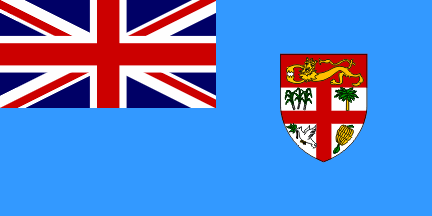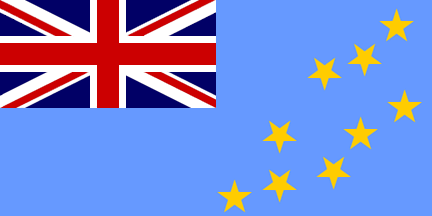And I am drawing on William Shakespeare's work, a soliloquy spoken by Prince Hamlet in the "nunnery scene", Act III, Scene I of Hamlet. The soliloquy opens with the lines "To be, or not to be, that is the question..."
And it appears that the Fijians had been engaged in a similar soliloquy on their national flag. To change or not to change, that was the question...
The Fijian national flag owes its existence to the country's colonial legacy. The country was colonised by the British under their monarch, Queen Victoria, in 1874. And quite naturally, the Fijians became British subjects. And the British imprint was left everywhere, including on the colonial flag of Fiji, a British ensign with the Fijian coat of arms.
And then in 1970, Fiji regained its sovereignty, independence from the British. But it retained its ties with the British by choosing to remain a dominion, as a member of the Commonwealth, with the Queen remaining the titular head of state, represented in the country by a Governor General, but the executive was led a locally elected Prime Minister, who was in-charge.
At that stage, the Fijians adopted a variant of the colonial flag - the deep blue ensign was replaced with a light blue ensign, and the coat of arms was replaced by the shield. That's the flag we see today.
I do shield on the blue ensign very striking and Wikipedia has a vivid description about the shield, which amalgamates both traditional Fijian aspects and the colonial legacy:
The colours and objects on the coat of arms carry cultural, political, and regional meanings. The Cross of St. George—which divides the shield quarterly—and the golden lion at the top represent the United Kingdom, the former colonial power that ruled over Fiji. The cacao pod held in the lion's paw, along with the sugarcane, coconut palm and bananas occupying three of the four quadrants, represent the country's natural resources, since these are key agricultural crops in Fiji. The bottom left quadrant contains a dove that symbolizes peace – this was utilized on the country's flag during the reign of King Cakobau, whose government was the last before the commencement of British rule.
And Fiji went through a tumultuous time, when in May 1987, the army led by Colonel Sitiveni Rabuka overthrew the democratically elected government of Timoci Bavadra. And in October 1987, the Queen was deposed as the Fijian head of state, and the nation was proclaimed as a republic. Concurrently, Fiji was expelled from the Commonwealth.
Despite the political upheavals, the British colonial legacy remained firmly imprinted on the national flag. There were many suggestions to move towards a Fijian identity on the national flag, calling retaining the Union Jack on Fijian flag, an act of timidity.
But the naysayers were voted out. Even, the perpetrator of coup d'etat, Rabuka was believed to have said "There are many aspects of one's history that people may not like, changing the flag will not change the fact that we were a colony. We cannot look to the future without a past."
And the flag debate was again revived in February 2015, the newly elected Prime Minister, Frank Bainimarama announced that the country would adopt a new flag that would be flown by the upcoming independence day in October 2015. A public contest was announced and a selection committee was constituted. Some of designs were quite striking and 23 designs were shortlisted, that included a lot of traditional Fijian symbolism such as the turtle, the conch, etc.
But public reactions were mixed, in fact some Fijians went on social media criticizing the new designs.
And then, something miraculous happened, Fijians rallied around the existing flag and celebrated it as a symbol of their nation. The Fiji-Sevens rugby team defeated their colonial "masters", Britain, 43-7, in the 2016 Rio de Janeiro Olympics. The Fijian flag was seen as a symbol of Fijian unity and triumph. And the Fijian prime minister issued a statement saying:
It has been deeply moving for me as Prime Minister to witness the way Fijians have rallied around the national flag as our Rugby Sevens team brought home Olympic Gold for Fiji. And I know this sentiment is shared by most Fijians. While I remain convinced personally that we need to replace some of the flag’s colonial symbols with a genuinely indigenous expression of our present and our future, it has been apparent to the Government since February that the flag should not be changed for the foreseeable future.
And the blue ensign still flies, still represents Fiji, quite remarkably, the only republic in the Commonwealth to have the Union Jack ensign. What's interesting is that both New Zealand and Australia which fly their own versions of the ensigns have ongoing national debates on whether to change their flag or not. Canada which had flown a red ensign till 1957, shifted to the red maple leaf flag in 1957. If Australia and New Zealand were to change their flags, that would leave only Fiji and Tuvalu, which fly a Union Jack ensign. And I must say Tuvalu has quite a striking flag.
Coming back to Fiji, it appears "to change, or not to change" was never a question in the hearts and minds of Fijians...




sh.gif)


No comments:
Post a Comment